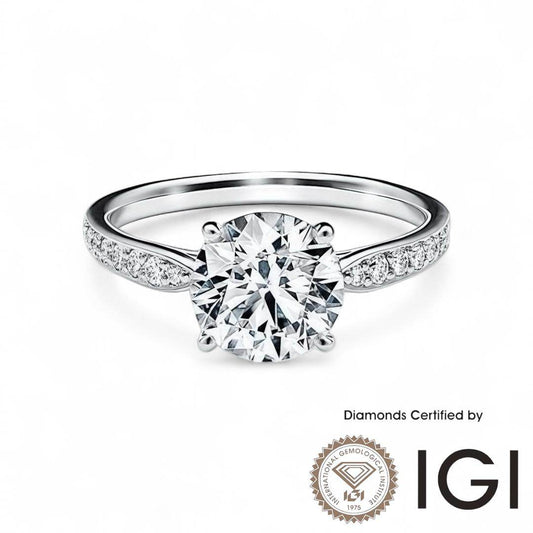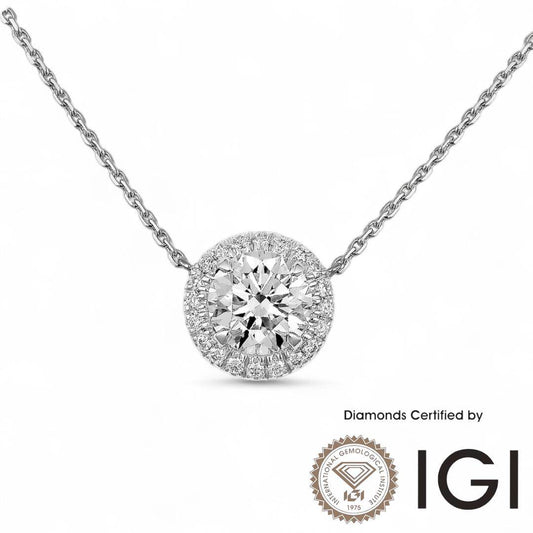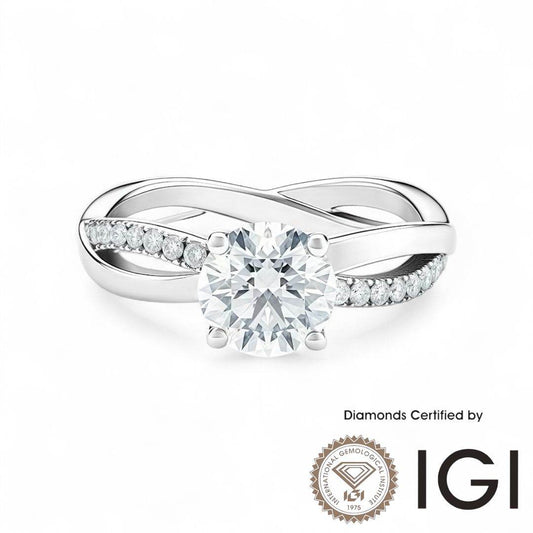Choosing the Right Metal and Setting for Your Lab Grown Diamond Ring: Expert Guide
When selecting a lab grown diamond ring, most attention goes to the sparkle of the stone — but the metal setting is just as important. The right metal affects your ring’s appearance, durability, and even how securely your diamond is held.
At Madisondia, our mission is to help customers make confident, informed choices. Below, we share professional insights into the most common metals used in lab grown diamond rings — comparing their look, value, and performance in everyday wear.
Comparison of Metals for Lab Grown Diamond Rings
| Metal Type | Composition | Durability | Maintenance | Value Retention | Chance of Main Stone Dropping | Our Recommendation |
|---|---|---|---|---|---|---|
| 9K Gold | 37.5% gold + alloys | ★★★★☆ (High) | Low | ★★★★☆ | ★☆☆☆☆ (Very Low) | ✅ Best balance of value and durability |
| 14K Gold | 58.5% gold | ★★★★☆ | Moderate | ★★★★☆ | ★★☆☆☆ (Low) | ✅ Excellent for daily wear |
| 18K Gold | 75% gold | ★★★☆☆ (Moderate) | Moderate | ★★★★★ | ★★★☆☆ (Medium) | ⚖️ Beautiful but softer — handle with care |
| 925 Silver | 92.5% silver | ★★☆☆☆ | High | ★★☆☆☆ | ★★★★☆ (High) | ❌ Not suitable for long-term diamond jewelry |
| Stainless Steel | Iron + Chromium | ★★★★★ (Hard) | Very Low | ★☆☆☆☆ | ★★☆☆☆ (Low–Medium) | ⚠️ Not offered by Madisondia due to crafting limits |
| Alloy (Non-Gold) | Mixed metals | ★★☆☆☆ | Varies | ★☆☆☆☆ | ★★★☆☆ (Medium) | ❌ Low value and possible skin irritation |
| Platinum (PT950) | 95% platinum | ★★★☆☆ (Soft surface) | High | ★★★☆☆ | ★★★☆☆ (Medium) | ⚠️ Not recommended due to cost and maintenance |
9K Gold — The Smart and Secure Choice
Containing 37.5% pure gold mixed with durable alloys, 9K gold is harder than 14K or 18K gold — making it ideal for secure lab grown diamond settings. It resists bending, protects prongs, and helps prevent the main stone from loosening or dropping. With gold prices remaining high, 9K gold offers an exceptional balance between durability, beauty, and gold value. That’s why Madisondia strongly recommends 9K gold for everyday jewelry.
14K Gold — The Perfect Balance of Strength and Warmth
With 58.5% pure gold, 14K strikes an excellent balance between rich color and mechanical strength. It’s durable enough for everyday wear while maintaining a refined tone, making it one of the most popular settings for engagement rings. 14K gold prongs hold lab grown diamonds securely with minimal maintenance and stable long-term value.
18K Gold — Classic Luxury with Caution
18K gold, composed of 75% pure gold, is known for its deep, luxurious tone but is slightly softer. Over time, this can cause prongs to loosen if worn daily. It’s ideal for luxury pieces or occasional wear where appearance takes priority over hardness.
925 Silver — Affordable but High Maintenance
Sterling silver offers a bright finish but requires regular polishing to avoid tarnish. It’s softer than gold, so prongs may bend or wear down, increasing the chance of a diamond loosening. Silver’s value and durability are limited, making it unsuitable for fine lab grown diamond jewelry.
Stainless Steel — Strong but Limited in Craftsmanship
Stainless steel is extremely durable and corrosion-resistant, but current crafting technology struggles to achieve the same polish and precision as gold alloys. Fine details like prongs or mirror finishing are harder to perfect. As a result, stainless steel rings may not look as smooth or refined. Madisondia does not offer stainless steel rings because they do not meet our craftsmanship and finish standards.
Alloy (Non-Gold) — Low-Cost but Low Value
Non-gold alloys made from copper or nickel may discolor, irritate the skin, and lose shine over time. Their low value and structural instability make them unsuitable for lab grown diamond jewelry.
Platinum (PT950) — Precious but Problematic
PT950 is composed of 95% platinum, admired for its natural white shine. However, it’s softer than gold, easily scratched, and costly to craft. The production loss rate is around 25% or more, compared to about 13% for 18K gold, making PT950 jewelry much more expensive. Platinum prices also fluctuate more than gold, reducing its investment stability. For these reasons, Madisondia does not recommend PT950 for most ring designs.
Summary: Madisondia’s Professional Recommendation
- 💎 Best Overall: 9K Gold — strong, secure, and valuable.
- 💍 Elegant Everyday Choice: 14K Gold — balanced tone and durability.
- ✨ Luxury Option: 18K Gold — premium appearance, gentle care needed.
- ⚠️ Not Recommended: Silver, stainless steel, alloy, or platinum due to softness, crafting limits, or unstable value.
Choosing the right metal ensures your lab grown diamond shines brilliantly and stays secure for years. At Madisondia, every ring is designed with precision craftsmanship and verified structural integrity to ensure both beauty and longevity.
FAQ — Lab Grown Diamond Ring Metal Guide
What is the best metal for a lab grown diamond engagement ring?
9K, 14K, and 18K gold are excellent choices. 9K gold offers strong hardness and good gold value, while 18K provides a luxurious shine. The best choice depends on your lifestyle and budget.
Why does Madisondia recommend 9K gold?
9K gold balances affordability, durability, and gold content. It’s harder than higher karat golds, making it less likely for your main lab grown diamond to loosen or drop.
Is platinum (PT950) better than gold for diamond rings?
Not necessarily. While PT950 is luxurious, it’s softer and scratches easily. It also has higher production loss and less stable market value compared to gold.
What about sterling silver or stainless steel settings?
Silver is affordable but softer and prone to tarnish. Stainless steel is durable but difficult to craft and polish, resulting in less refined finishes. Madisondia currently does not offer stainless steel rings.
How can I prevent my diamond from falling out?
Choose durable metals like 9K or 14K gold, ensure proper prong design, and have your ring inspected regularly by a professional jeweler.





